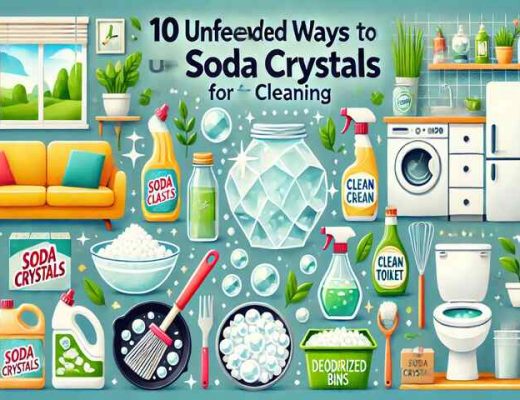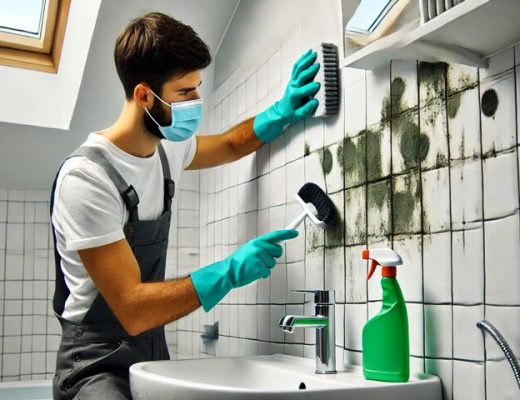Have you ever wondered whether your home, which is viewed as the safest place, is actually undermining your health in silence? You vacuum, you dust, you air it out but you can not stop sneezing. Your nose is running, your eyes are itchy, and you wonder: Is it the cleaning that causes my allergy to act up and not the antidote? Having allergies means that cleaning is not only a measure of tidiness but rather that of building of an environment that truly serves you. When do you approach dust, pet dander, mould and pollen in the house without causing them to become airborne and aggravating your symptoms? This guide will talk about how to go around and clean your home when you have allergies without flare-ups. Let us turn your room into an allergy-tolerant environment.
1. Find Out What You Allergy to First Before You Start
The first way to clean smart is to be aware of what you are allergic to. They are the dust mites, pet dander, mould spore and pollen in End of Lease Cleaning Sunshine Coast. Each of them behaves in a different way: dust accumulates in garments, pet dander adheres to the furniture, mould in a wet environment and then pollen gets inside through the open windows. When you understand what you are reacting with, you can clean with accuracy. You will not randomly clean every inch of the area but will be aiming at areas where you suffer your symptoms. It will not only help your cleaning efforts but will save energy and limit exposure as well. One can consider speaking with an allergist in case he or she does not know what triggers these flare-ups.
2. To the (Cleaning) Occasion
The easiest thing that someone can do is to clean; it can be so easy unless one is an allergy victim, cleaning then should come as a precaution. Just by putting on a N95 mask, before you extend a finger toward a duster or a spray bottle, you stop inhaling airborne allergens. Others to be worn include glove to prevent the irritation of the skin as a result of dust and cleaning materials. The use of long sleeved garments and full length pants provide a cover between allergens and your body. Such preparation may seem excessive, and once, having tried it, you will notice the differences in how your body reacts, it will feel like a complete necessity.
3. Begin by the Head, and End by the Foot
When there is a disturbance of allergens, they incline to become airborne and descend at some times later- which in most circumstances just after completing cleaning. Then you should always start with the uppermost things such as shelves and ceiling fans and work downwards. Your best friend is microfiber cloths here, they do not need to spread dust instead of catching it. Relax and don not hurry it up. Wash a little at a time in a logical fashion and wipe slowly as you are dusting rather than dry cloths so that particles do not rise. Finally is vacuuming, preferably vacuuming where there is a HEPA filter so that any allergens that have lodged are vacuumed up and they are not blown in the room again.
4. Special attention should be paid to the floors.
It does not matter whether you have carpets, tiles, or wooden floor because the allergens accumulate here more than anywhere. In case you have severe allergies, you might put aside wall-to-wall carpeting and rely on hard floor that is far easier to maintain free of allergens. But when that is not the case, then routine vacuuming using a machine fitted with HEPA filter is important. In cases with hard surfaces, a damp mop must be preferred instead of a broom, which usually spreads dust only. Pay particular attention to the corners and edges as it is the places where dust usually gathers, unnoticed. The fewer the dust and dirt around your floors, the lower the amount of allergens that float in your home.
5. Don Forget Soft Surfaces
Even stuffed toys and cushions, curtains and rugs, mattresses can contain huge quantities of allergens. Though these things might appear to be clean, they are usually the dust mite and dander. Put the fabric items through hot water (it must be at least 60 degree C high) once a week to eliminate the mites. Place allergen-proof covers on your pillows and your mattresses to serve as a shield between you and the allergens. Upholstery and curtains which are not frequently washable should be vacuumed with aid of upholstery attachment equipped with HEPA filter. House cleaning This ritual maintains the amount of allergens at bay without the necessity to change the entire set.
6. Keep an Allergy Free Bathroom
Bathrooms are the most infamous houses of mould since they are very humid. Get into the habit of ventilating the room before and after taking a shower make-up by simulating a window or by using an exhaust fan. Clean scrub shower tiles, grout and corners on a regular basis using a non-toxic mould cleaner or a combination of vinegar and water. Surfaces should be maintained dry and clean in order to avoid formation of spores. Mould can also grow on shampoo bottles and even toothbrush holders in case they do not get checked in time. You can turn your toilet into a mould-free zone, because it is one of the most elusive allergy triggers around the house.
Conclusion
House cleaning with allergies appears to be an impossible task, yet as soon as you master the proper strategies, it does not appear to be a fight anymore, but more of an attitude. It is not only the glam on the surface but the health, comfort, and long-lasting escape. Clean smart, protect yourself and target unseen allergens and you will make the house a place that truly supports you. There is no longer itching eyes, with sneezing, and whimsical coughs, but fresh air, clean rooms, and confident mind. And the thing is this consistency. A small daily struggle would help a lot in preventing allergens and protecting your home and environment calm and peaceful.



